As a Leadtail remote worker, I can work from anywhere, so the idea of working from everywhere is appealing and what I pursue as often as possible.
For 30 days, my remote work setup recently included two Airbnbs with fantastic views of Montevideo and Buenos Aires.
This blog will share some of my adventures in these two cities while outlining how I plan and prepare for each trip.
At the end of this blog, almost an appendix, I include what I travel with and how my preparation comes down to being lean and well-prepared for eventualities while traveling.
Here are a few areas that are now part of my planning and preparation for short and long trips close by and abroad.
Planning my Trips
In January 2022, I planned to visit Finland, Lithuania, and Poland, with stops in Vilnius, Kaunas, Warsaw, Gdansk, and Krakow. Over a month, I would travel by air, train, ferry, and bus to several places of interest. Being a WWII history buff, I planned to visit Treblinka, Auschwitz, and historic WWII sites in Kaunas. This plan was put on hold in February when Mr. Putin decided to invade Ukraine. Instead, my backup plan was to steer clear of Europe, with South America in my sights.
When traveling for work, my preference is to visit countries that are stable economically and politically. For example, Sri Lanka is on my list, but its recent troubles are now at the bottom of the list. I also tend to avoid places that may be more dangerous than others in terms of petty crime and robbery. Watching the daredevil YouTubers who seek hazardous places to travel is as close as I get. So, with all that in mind, Uruguay and Argentina topped the list.
Anchorage, Alaska. What a view!
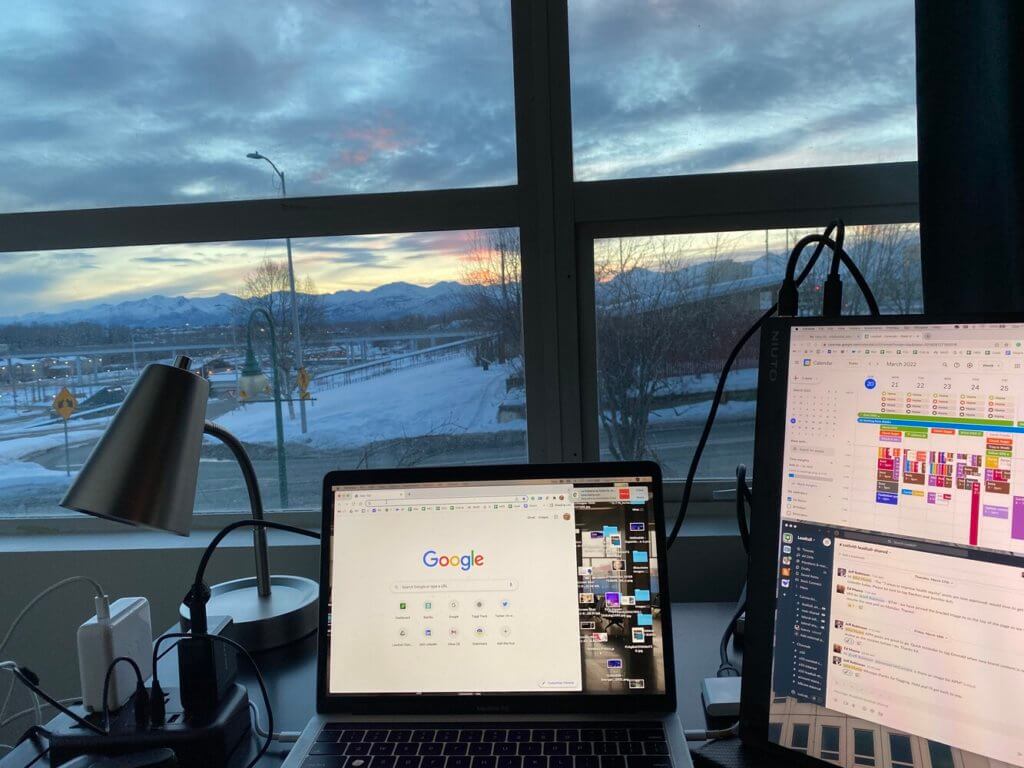 Before confirming my plans to South America, I decided to check out Anchorage, Alaska in March. Because I had accrued Alaska Airlines points, I decided to check out what would be my 45th state. I reviewed several Airbnb one-bedroom apartments, but most were lame and many of the hotels in Anchorage were expensive or just not up to par. Finally, I found a spot that featured a view of the Dora Keen mountain range. An Airbnb with a nice view was something that had been missing on most of my previous trips, so I seized the opportunity and the amazing view at this place ended up being the highlight of my week.
Before confirming my plans to South America, I decided to check out Anchorage, Alaska in March. Because I had accrued Alaska Airlines points, I decided to check out what would be my 45th state. I reviewed several Airbnb one-bedroom apartments, but most were lame and many of the hotels in Anchorage were expensive or just not up to par. Finally, I found a spot that featured a view of the Dora Keen mountain range. An Airbnb with a nice view was something that had been missing on most of my previous trips, so I seized the opportunity and the amazing view at this place ended up being the highlight of my week.
Something that would foreshadow my trip to South America.
Kayak and Skyscanner
Most of my planning starts with looking at the multi-city options on Kayak and Skyscanner. I find the best deals are one-way or multi-city, never roundtrip. For South America, the flight plans to Buenos Aires and Montevideo were limited. Still, after a couple of weeks of searching every other day, the American Airlines itinerary from Portland-Dallas-Sao Paulo-Montevideo and then from Buenos Aires-Miami-Charlotte-Portland business class option was the most economical.
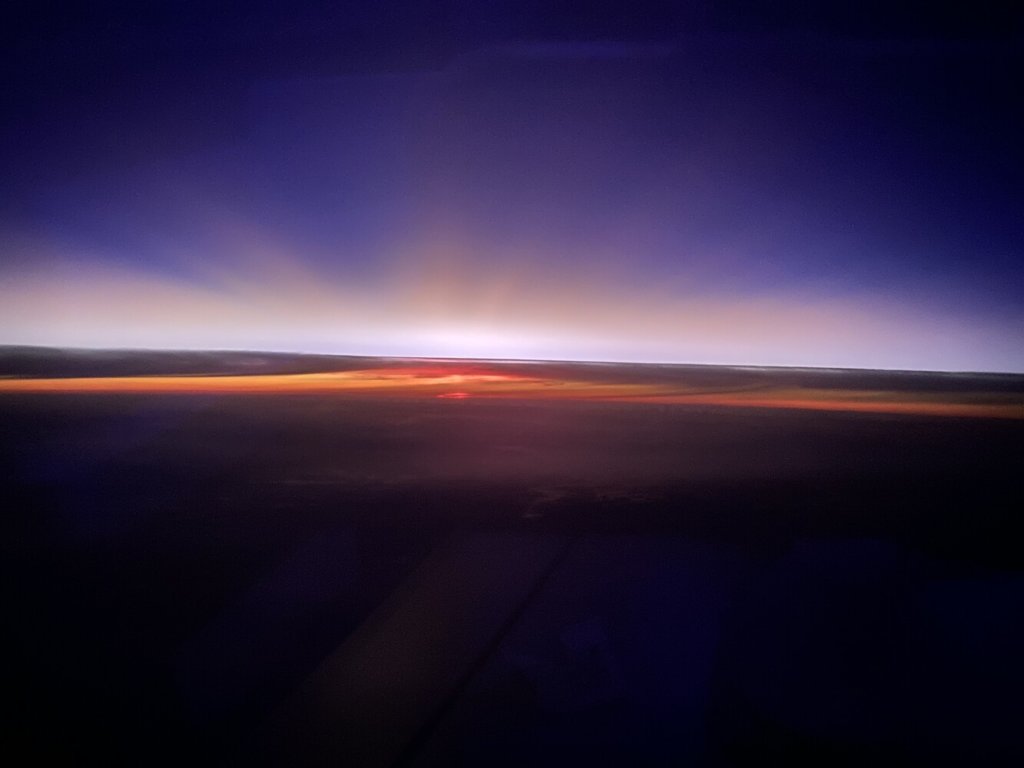
 For long-haul flights, I always try to find deals in business class for two reasons, the business lounge for working is ideal, and the flatbed sleeping option is the best way to arrive without being exhausted.
For long-haul flights, I always try to find deals in business class for two reasons, the business lounge for working is ideal, and the flatbed sleeping option is the best way to arrive without being exhausted.
Of course, most business-class options are way too expensive to consider, but there are deals to be had with persistence and flexibility.
Also, I always revert to economy class for shorter flights between cities to get the absolute best deals.
Flying to Montevideo
I left Portland early on May 26, taking American Airlines Airbus A321 to Dallas, where my connecting flight was on a 787-900 to Sao Paulo, Brazil. The Flagship Lounge in Dallas was an ideal work spot for a few hours. The overnight flight in business class was nice, but I didn’t sleep that well. Arriving in Sao Paulo was interesting. After departing the plane, I was greeted by a woman with a sign saying “Montevideo” and was asked to hang back. The attendant checked my vaccination status, and then my journey through the airport began. I went through the baggage claim line (although I had no checked bags), waited for customs, tried to find the domestic terminal, exited Customs, waited in security lines, and finally onto my gate. The one thing that stood out about GRU was the restrooms – most had non-functioning or broken toilets.
My next flight was on a 737-Max on GOL Airlines. After 2.5 hours, arriving in Montevideo was a surreal experience as we were the only airplane on the tarmac and the only one at its 6 – 8 gates. Carrasco International Airport is probably the least busy airport I have ever visited. Although they have Uber, no one was around. So after waiting in the departures area for 20-minutes with no one around, I went downstairs and took a taxi into the city.
Montevideo, Uruguay
The River Plate is on the east coast of South America, below Brazil, where the delta includes Buenos Aires, Argentina, and Montevideo, Uruguay. It was the perfect place to check out for a month, with nine days in Uruguay and 21 in Argentina. I typically will stay three days in a city before moving on, but I found my week-long stays in Porto and Lisbon, Portugal, were an excellent option. But with COVID and the limited places, I preferred to work in South America meant staying in these places longer.
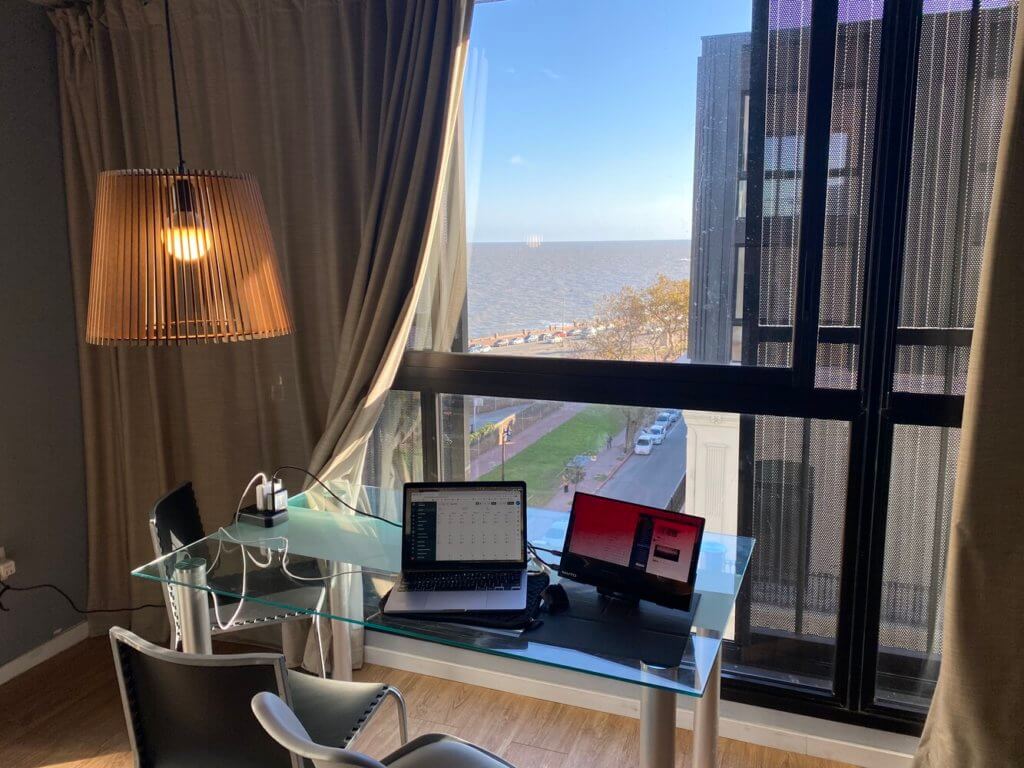
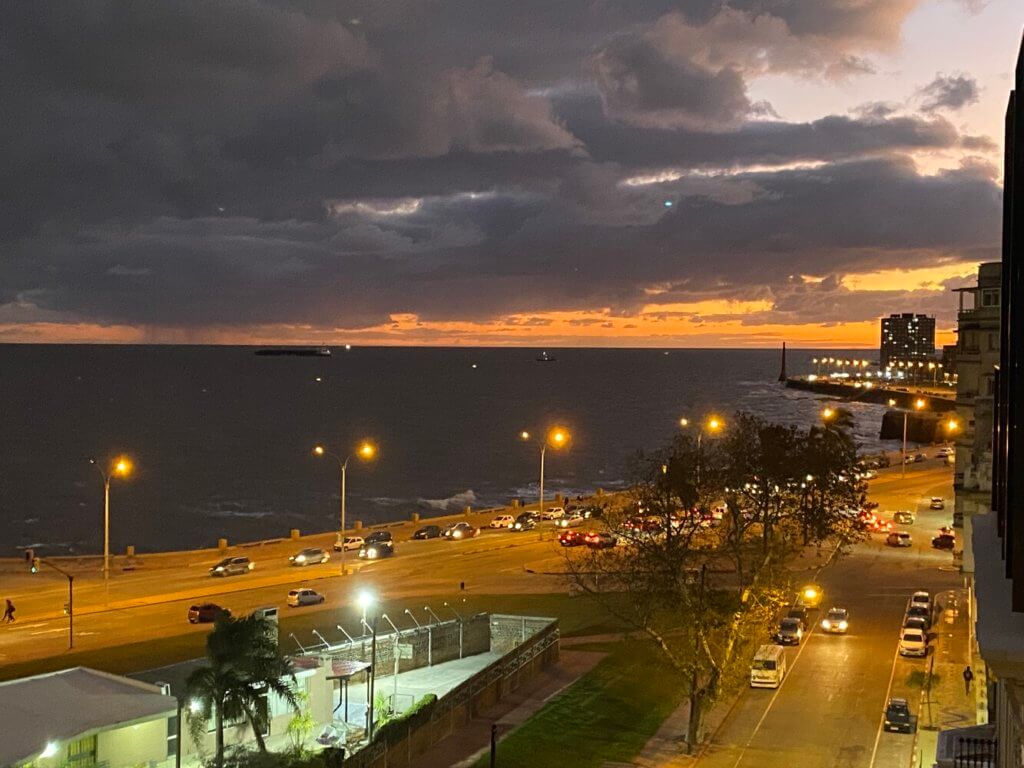 After booking the best flight plan, I reviewed my favorites list of top Airbnbs in Montevideo and Buenos Aires. After my experience in Alaska, finding apartments with great views in friendly neighborhoods was the goal. In Montevideo, I ended up staying in the old part of town, but in a new building on the sixth floor that overlooked the Rambla and the River Plate. It was fantastic! Each work day was met with a pretty view of the river and watching the locals below heading off to work or taking their kids to school.
After booking the best flight plan, I reviewed my favorites list of top Airbnbs in Montevideo and Buenos Aires. After my experience in Alaska, finding apartments with great views in friendly neighborhoods was the goal. In Montevideo, I ended up staying in the old part of town, but in a new building on the sixth floor that overlooked the Rambla and the River Plate. It was fantastic! Each work day was met with a pretty view of the river and watching the locals below heading off to work or taking their kids to school.
The highlights of spending over a week in Montevideo included: Walking the 13.7-mile Rambla, a beautiful promenade that runs along the Río de la Plata. The old city center was a pleasant 5-minute walk from my Airbnb, featuring fabulous restaurants with fantastic food. Wandering through these old and new neighborhoods toward the Rambla was also interesting.

The Battle of the River Plate

Probably the coolest highlight was seeing the Graf Spee memorial. The German pocket battleship Admiral Graf Spee was the focus of one of the first naval battles of WWII. After clashing with three British cruisers off the coast of Uruguay in December 1939, the damaged Graf Spee sought sanctuary in the port of Montevideo for 72 hours. Thinking that it would be attacked by a superior force when departing, the captain scuttled the Graf Spee 6 miles off the coast of Montevideo.
Being at the memorial was a fantastic chance to see an “obscure” piece of WWII history I had read about as a kid. Seeing the ship’s telemetric range finder, salvaged in 2004, was a treat!
Buenos Aires, Argentina
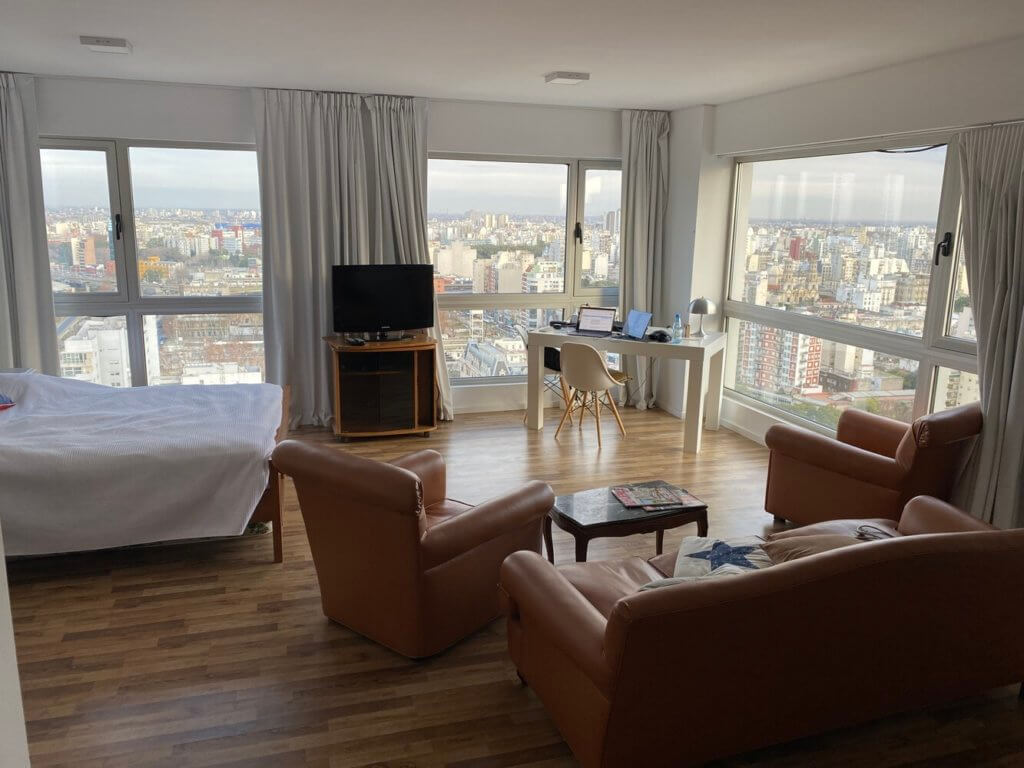
After nine days in Montevideo, I traveled by bus heading west to Colonia del Sacramento, where I took a 2-hour ferry across the River Plate to Buenos Aires. Upon arrival, I went through Customs only to find that I needed a declaration card, an item I had not seen on the ferry or at the terminal. After some discussions, the Customs agent had me fill in an impromptu form, and I was on my way.
Arriving in the Puerto Madero area was a convenient 20-minute walk to my Airbnb. After arriving in my 22-story apartment studio, I set up my workspace in the corner of the suite with floor-to-ceiling windows overlooking Buenos Aires.
This apartment was, by far, the most impressive remote work location I had visited yet. The sweeping views were beyond exceptional, and each day I was smiling, looking across the vast metropolis of BA. After three weeks of waking up and going to bed with such an intense view, I was sorry to leave.
Three weeks – a new routine
In Portland, I have regular routines that define my work days. One of these is getting out for a long walk or bike ride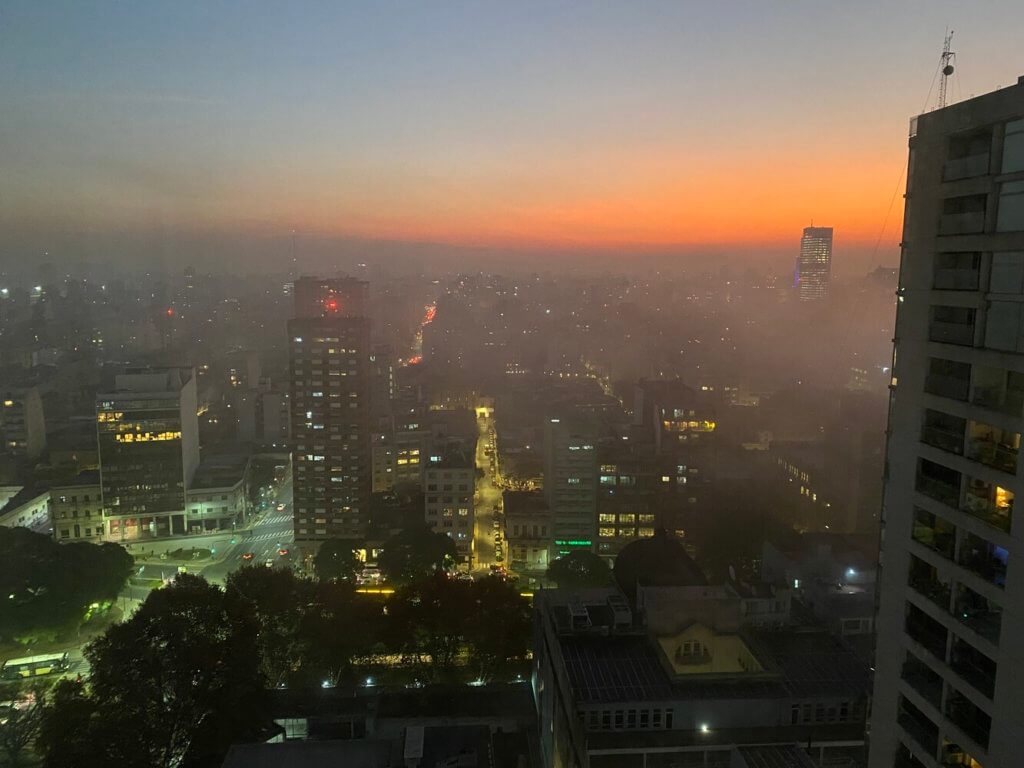 each day.
each day.
Listening to my tunes or podcasts during or after a workday allows me to relax and unwind from the business at hand.
In Buenos Aires, in addition to exploring much of the city’s notable areas and sites, I became familiar with the San Telmo and Puerto Madero neighborhoods on my daily walks. (Just before leaving on my trip, I had obtained a new pair of Nike running shoes.
After I returned to Portland, the soles were history. Which is to say, the numerous miles I walked in Montevideo and Buenos Aires were great exercise and lots of fun.
The food was awesome and reasonably priced
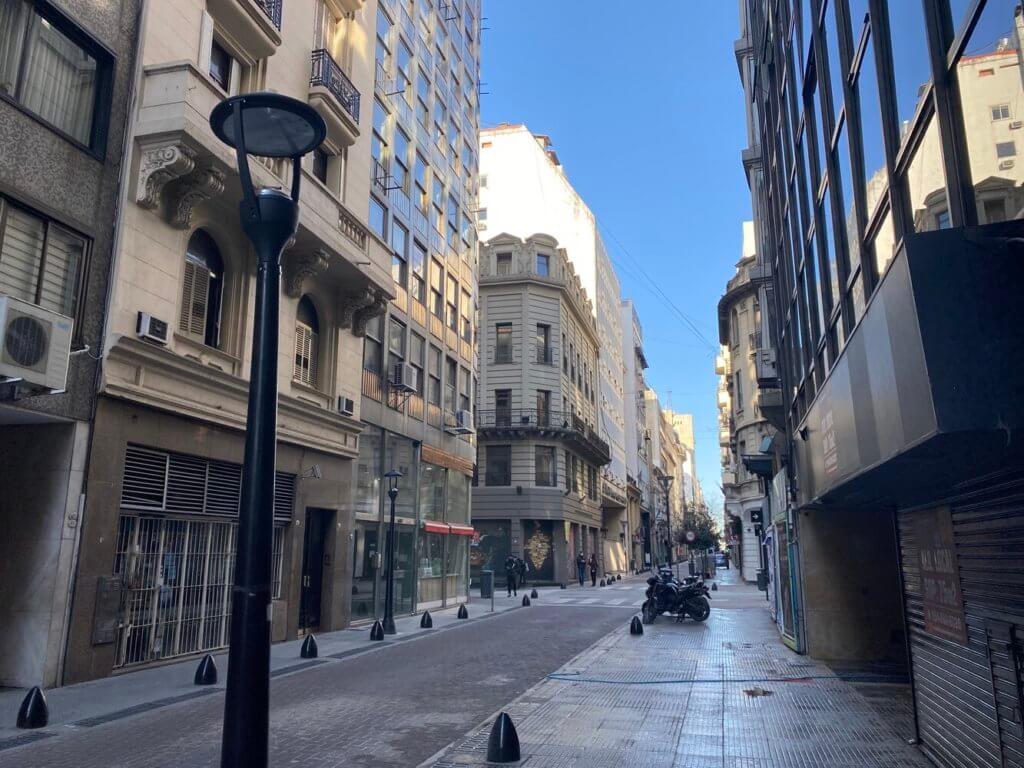 The local food in Buenos Aires was good, including the empanadas, but the Vietnamese noodle house I found in San Telmo was a favorite. I also bought groceries and made food, including pasta and salads. I found the grocery stores were relatively cheap, whereas the restaurants we much more expensive – but still reasonably priced. In Argentina, I took advantage of the Blue Rate, which almost doubled the value in US dollars.
The local food in Buenos Aires was good, including the empanadas, but the Vietnamese noodle house I found in San Telmo was a favorite. I also bought groceries and made food, including pasta and salads. I found the grocery stores were relatively cheap, whereas the restaurants we much more expensive – but still reasonably priced. In Argentina, I took advantage of the Blue Rate, which almost doubled the value in US dollars.
Heading home
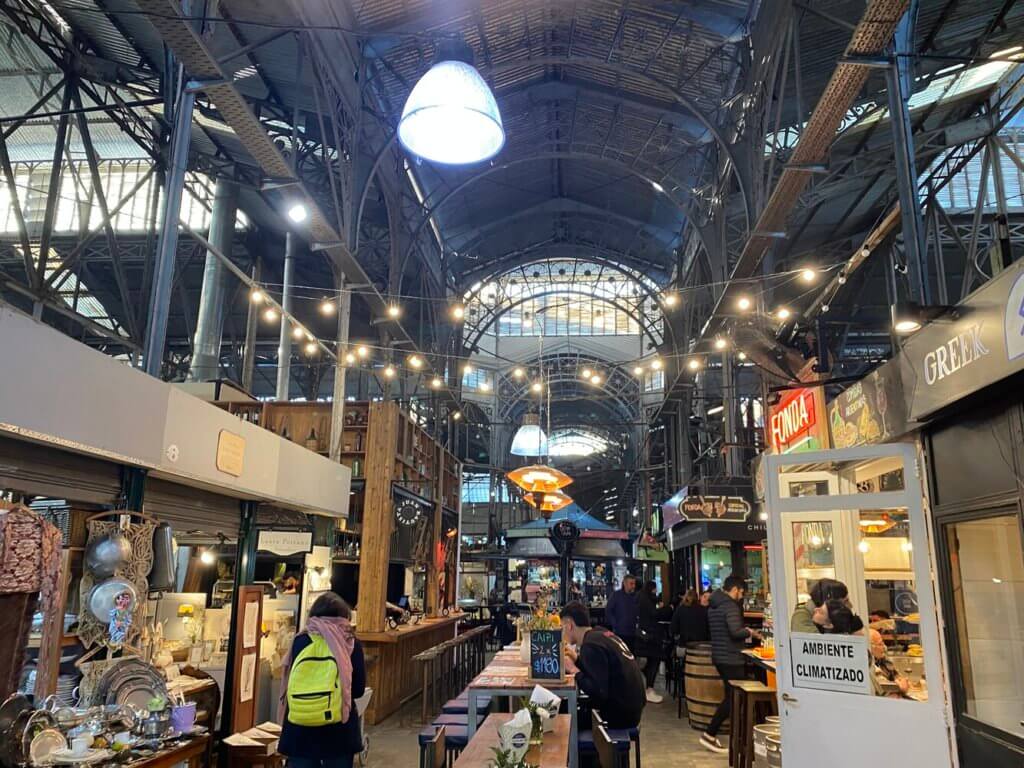 My return trip took me from Buenos Aires EZE to Miami overnight on a 777-200 in business class. The 8.5-hour flight was enjoyable, with excellent food and sound sleep. Arriving in Miami at 4:00 AM local time was good – but the line to Customs was long, and I could not find the Global Entry line until after getting to another line.
My return trip took me from Buenos Aires EZE to Miami overnight on a 777-200 in business class. The 8.5-hour flight was enjoyable, with excellent food and sound sleep. Arriving in Miami at 4:00 AM local time was good – but the line to Customs was long, and I could not find the Global Entry line until after getting to another line.
My NEXUS pass, which I use to go back and forth to Canada, also works for TSA Pre-Check and Global Entry. Once through US Customs and security, I was off to the Flagship lounge to catch up on some work. The next flight was 2.5 hours on a 737-900 to Charlotte, NC.
Flying to Charlotte-Douglas was a nice bonus as I had an eight-hour layover and headed into town.
My first time in Charlotte and NC was my 46th state – finally. After walking around the city and having lunch at a local restaurant, I headed back to the airport. The issue here was that the WiFi was not working – I tried and tried – but there was no solid connection. I tethered my computer to my phone’s hotspot – but what a pain.
After the 5.5-hour flight back to Portland on another Airbus-321, I was tired and ready for bed as it was close to 4:00 AM Buenos Aires time by the time I got to bed.
What a fantastic trip! Our Leadtail work was smooth while I discovered new places and met many kind people.
What I travel with – Just the basics
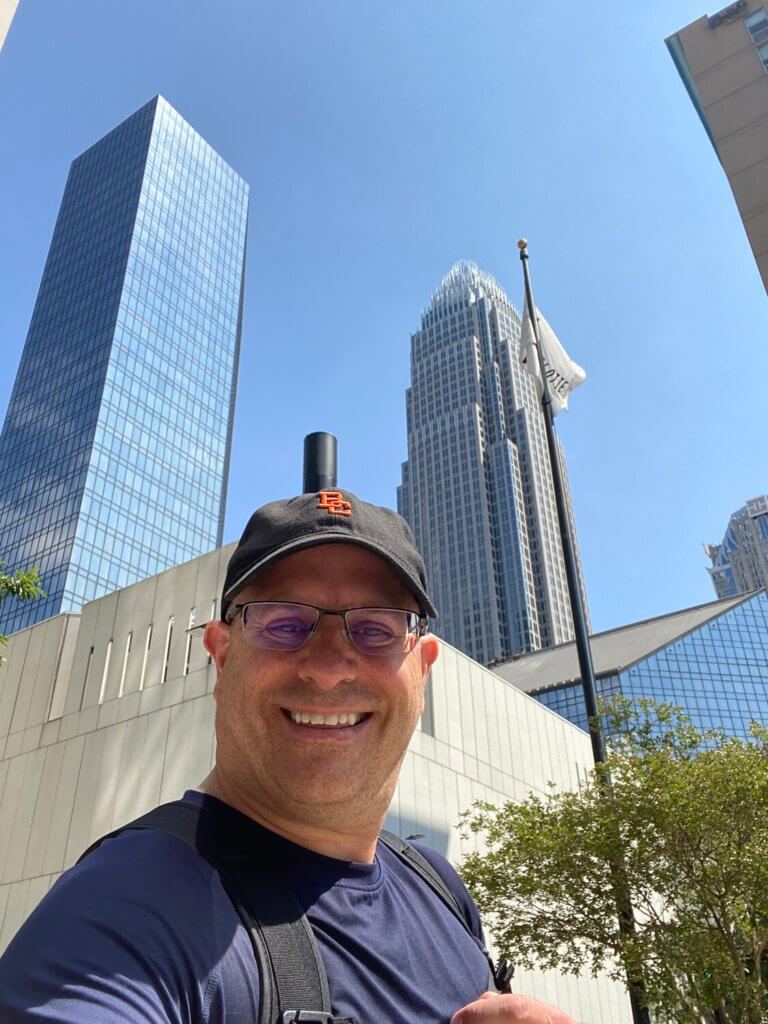 I like to travel light and well-prepared. Over a few years, I have added travel gear accessories when on the road or watching YouTube travel gear videos.
I like to travel light and well-prepared. Over a few years, I have added travel gear accessories when on the road or watching YouTube travel gear videos.
For example, I just added the portable monitor this year and had been given earbuds as a gift after already having a set. Sticking with the essentials is the most economical way to begin as a remote worker.
Starting with a Tom Bihn Synapse 25 backpack and a Victorinox two-wheel carry-on bag, it makes the perfect combination of sleek travel gear that carries a lot in a slim profile. This way, I always have everything I need and never have to check a bag. Also, the two-wheel option allows me to use the top of the bag as a stable laptop “desk” at the airport or train station.
What I carry in my backpack:
- 13-inch MacBook Pro,
- Niuto 14-inch portable monitor,
- Laptop cables
- Three universal travel adapters,
- Charging cables and adapters.
- Jackery battery chargers
- Two sets of Jabra elite 75t earbuds (One gets charged while I use the other on long-haul flights).
- Flowfold wallet
- Davek mini umbrella
- MEC tri-fold travel wallet for passports and docs, in addition to keys
- Small pack for miscellaneous items, energy bars, wooden spork, handy wipes
In my carry-on, I use travel cubes for three pairs of pants, bike shorts, five t-shirts, six pairs of socks, and underwear. Depending on where I’m going, I usually wear a button-up long-sleeve shirt with a breast pocket (super handy for boarding passes and passport when getting through security or at the gate).
I also include:
- My YETI coffee mug
- Tru Earth Eco-strips
- Limural clippers
- Matador packable backpack and soap bar case.
- Shaving kit
- A microfiber towel
- Pentax binoculars
- A Ntonpower bar
I also pack Fit Kicks slippers on the outside pockets, a Helly Hansen super light down jacket, and a light windbreaker.
Portable WiFi
When traveling outside the US, my iPhone is permanently in airplane mode. I use GlocalMe mobile WiFi, which turned out to be a wise investment. I used to rent the portable WiFi whenever arriving at my destination, but this time decided to bring my own. Not only could I purchase a reasonably priced local data plan, but the Android-style unit had a built-in translator that I could speak into and would repeat what I said in text and audio in the local language.
Originally published on LinkedIn.
